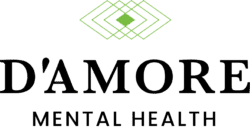Abrams, Z. (2019, September). Puerto Rico, two years after Maria. Monitor on Psychology, 50(8). http://www.apa.org/monitor/2019/09/puerto-rico
American Psychiatric Association. (n.d.). Seasonal Affective Disorder (SAD). Retrieved December 1, 2020, from https://www.psychiatry.org/patients-families/seasonal-affective-disorder
Centers for Disease Control and Prevention. (2020, November 27). COVID-19: Holiday Celebrations. Retrieved December 1, 2020, from https://www.cdc.gov/coronavirus/2019-ncov/daily-life-coping/holidays.html
Ettman CK, Abdalla SM, Cohen GH, Sampson L, Vivier PM, Galea S. Prevalence of Depression Symptoms in US Adults Before and During the COVID-19 Pandemic. JAMA Netw Open. 2020;3(9):e2019686. doi:10.1001/jamanetworkopen.2020.19686
Kerr, M. (2017, February 08). Holiday Depression: Statistics & How to Deal (T. J. Legg Ph.D., CRNP, Ed.). Retrieved from https://www.healthline.com/health/depression/holidays
Mayo Clinic. (2017, February 08). Light therapy. Retrieved from https://www.mayoclinic.org/tests-procedures/light-therapy/about/pac-20384604
Parker, K., Minkin, R., & Bennet, J. (2020, October 30). Economic Fallout From COVID-19 Continues To Hit Lower-Income Americans the Hardest. Retrieved from https://www.pewsocialtrends.org/2020/09/24/economic-fallout-from-covid-19-continues-to-hit-lower-income-americans-the-hardest/
Pietrangelo, A. (2018, September 24). 9 Types of Depression and How to Recognize Them (T. J. Legg Ph.D., CRNP, Ed.). Retrieved from https://www.healthline.com/health/types-of-depression#major-depression
Rossen LM, Branum AM, Ahmad FB, Sutton P, Anderson RN. Excess Deaths Associated with COVID-19, by Age and Race and Ethnicity — United States, January 26–October 3, 2020. MMWR Morb Mortal Wkly Rep 2020;69:1522–1527. DOI: http://dx.doi.org/10.15585/mmwr.mm6942e2external
WebMD. (2019, August 29). Double Depression: Definition, Symptoms, Treatment, and More. Retrieved December 1, 2020, from https://www.webmd.com/depression/double-depression#1























The Effects of Social Isolation